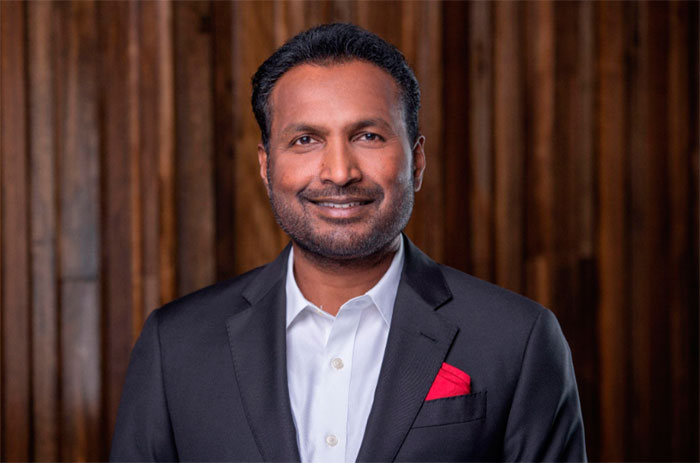In any ambitious business venture, success depends not only on individual talent but also on how a team is assembled and managed. Leaders who understand their capabilities and limitations are better positioned to bring in complementary skills that drive productivity.

American Ventures’ founder and CEO, Shravan Parsi, emphasizes the value in recognizing personal and organizational strengths and limitations. By identifying gaps and matching them with the right expertise, he believes that teams can operate more efficiently and tackle complex challenges effectively.
Defining Roles and Responsibilities
Shravan argues that no individual can manage every aspect of a growing business. Clearly defining roles ensures that responsibilities are aligned with specific strengths. For instance, an acquisitions specialist may require support from someone with operations or asset management expertise to handle day-to-day execution and performance tracking.
Assigning responsibilities thoughtfully reduces inefficiencies, prevents overlap, and allows each team member to excel in their domain. Early experiences in structured ventures show that pairing less experienced talent with mentors improves skill development and overall output.
Creating a Culture That Retains Talent
Retention is driven by more than compensation. While financial incentives like bonuses or profit-sharing are essential, a culture of development and recognition is equally influential. Access to professional growth opportunities, transparent communication, and supportive work environments encourages team members to commit long-term.
Shravan emphasizes that teams perform best when individuals feel empowered, appreciated, and invested in the shared success of the organization. Activities that strengthen collaboration and reinforce accountability contribute to higher engagement and lower turnover.
Communication and Transparency
Efficient teams rely on clear communication channels. Weekly progress meetings, centralized data systems, and transparent updates on project goals and KPIs keep everyone aligned.
When each member understands their contribution and the broader objectives, decision-making improves, and responsiveness to challenges increases. Structured feedback loops prevent misunderstandings, clarify expectations, and ensure accountability. Transparency in operations creates trust, allowing teams to function smoothly even during high-pressure periods.
Structuring Teams for Maximum Impact
Effective organizational structure is crucial for scaling operations. Although smaller, highly skilled teams can tackle complex projects efficiently, clear delegation is essential for enabling the business to expand without compromising quality.
Separate units for acquisitions, asset management, construction, and client services ensure accountability and specialization. Leadership roles, such as an operations director or COO, bridge departments, coordinating activities and aligning them with strategic goals. With the proper alignment of skills and responsibilities, performance can be maximized and high standards can be maintained across all functions.
Aligning Motivation and Behavior
Shravan Parsi’s lengthy career experience has taught him that teams perform best when incentives, responsibility, and recognition are aligned. Differences in perceived value or contribution can cause conflict, so leaders must establish fairness and transparency.
Trust is reinforced through ethical practices, shared goals, and consistent acknowledgment of performance. Precise alignment of motivation and behavior helps teams stay engaged, productive, and focused on delivering results. Shravan also believes in the value of risk management and structured protocols, both of which further support consistent performance while protecting both the organization and its members.
Mentorship and Strategic Hiring
Shravan advocates combining strategic hiring with mentorship programs to strengthen team capabilities. Pairing complementary skills and providing structured guidance fosters growth and accountability. By recognizing achievements and offering clear paths for advancement, organizations develop internal leadership pipelines.
Shravan is also a firm believer in mentorship. For the seasoned business leader, this ensures that knowledge and experience transfer efficiently, preparing emerging talent to handle increasing responsibility and contribute meaningfully to long-term objectives.
Measuring Performance and Accountability
Performance metrics and regular assessments are crucial to maintaining high-functioning teams. KPIs, milestone tracking, and periodic reviews provide transparency and allow leaders to identify strengths and areas for improvement.
In his various endeavors, Shravan has consistently strived to establish a culture of learning from both successes and challenges. Apart from enhancing resilience, analyzing results systematically enables leaders to adjust strategy, reassign responsibilities, and optimize workflows to maintain consistent operational efficiency.
Optimizing Resources and Project Allocation
Allocating projects based on team strengths maximizes efficiency and prevents burnout. High-performing teams benefit from tools and technologies that streamline communication, reduce manual tasks, and improve project tracking.
Training programs and development initiatives are also invaluable for expanding skill sets as well as fostering loyalty and engagement. Teams that feel supported and equipped for success consistently deliver superior results and adapt more easily to evolving business demands.
Balancing Risk and Opportunity
Managing risk effectively while pursuing opportunities requires experience and strategy. Shravan points out that pairing seasoned professionals with emerging leaders ensures continuity, knowledge transfer, and calculated risk-taking.
Furthermore, empowering team members with responsibility while providing oversight allows organizations to pursue ambitious goals without exposing the business to unnecessary setbacks. This approach cultivates a culture of accountability, innovation, and proactive problem-solving.
Designing Teams for Growth
The best examples of business growth tend to be driven by intentional team design, structured processes, and strong leadership. Leaders who identify complementary skills, align incentives, communicate clearly, and establish accountability set the stage for sustainable results.
Shravan Parsi’s own career is a testament to the theory that successful teams are the product of deliberate planning, strategic hiring, and ongoing mentorship. Over the years, he’s proven that a culture of collaboration, recognition, and continuous improvement can help organizations achieve ambitious objectives, maintain operational excellence, and scale effectively in competitive markets.
